#shrimp farm
Text

#Grow your own #Food #Feed your own #Family @fa-q-shrimpco
#florida#aquaculture#seafood#shrimp#shrimp farm#fish farm#fish farming#sea#ocean conservation#local#USA#Food#restaurant#fishing#Apparel#FL#SWFL#Naples#BonitaSprings#Tampa#Orlando#Miami#aquaponics#Eat#Healthy#Natural#sustainability#sustainable#family#familia
7 notes
·
View notes
Photo

Ann's Shrimp Etouffee
Shrimp, onions, celery and mushrooms, seasoned with paprika, garlic and crushed red pepper. Great over steamed rice.
0 notes
Text

at this point tumblr is a site for money laundering
(Translation: its an ad about starting your own shrimp farm by learning to genetically modify shrimps)
54 notes
·
View notes
Note
it's really heartwarming to know that you know about how much you matter to people... even from a distant glance, from being acquainted with you, to being your friend... :) how blessed the people in your life who you are with must be.. 🤍
I had to pull myself out of the "NOBODY LIKES ME" mindset by the hair because I realized that was such a disservice, if not a total spit in the face to people who love me. I know if I started saying that I don't feel loved by anyone, it would hurt my boyfriend, my chosen family, my closest friends. I don't want them to feel as if they haven't "done enough" for me, or whatever. Sometimes I do feel fundamentally unlovable but I would never tell someone they don't actually love me...I've been on the receiving end of that plenty of times with plenty of different people, and every single incident feels like a punch to the gut. I know I'm loved, I know I matter to people, I wouldn't want them to ever doubt that I value that love....as much as being loved can be painful. I'm rambling at this point but, if I can't see myself as "worthy" in my own eyes, it's nice to remind myself that in the eyes of others, I'm more than enough. If I can't live for myself, I'll live for them.
#Does that make sense....?#This is insane to say but that one greentext about a depressed man recovering because of his shrimp farm really put things into perspective#for me....I can't let relationships die because of my own failure to live properly. Pushing everybody away only adds salt to the wound.#Being alone vs enjoying solitude.....I'm sure I'm incoherent right now....
9 notes
·
View notes
Text
eyestalk ablation in shrimps
Eyestalk ablation is a common practice in shrimp farming. Ablation is a more technical word for removal. With eyestack ablation, one or both eyestalks are removed from female shrimps.
Sometimes the eyestalks are not removed, but they are made unusable. This is done to encourage the crustaceans to develop mature ovaries and lay eggs. In captivity, female shrimps often face challenges in maturing their ovaries. Even when a species can reproduce in captivity, eyestalk ablation boosts egg production and the number of females involved in reproduction.
Image with kind permission from The Ethic Whisper.

8 notes
·
View notes
Text
youtube
Tamil Nadu's shrimp farmers are struggling with escalating costs. Replacing traditional fishmeal with insect feed, now leaves them with healthier shrimps and greater profits.
**********
Credits:
Supervising Producer: Nooshin Mowla
Field Producers: Roohi Sahay & Animesh Tiwari
Script Inputs: Roohi Sahay
Producer & Script: Ipsita Basu
Video Editor: Sujit Lad
Director of Photography: Hoshedar Shroff
Camera Assistant: Mantesh Kallimani
Camera (Tamil Nadu): Saraskanth TK
Voiceover: Rhicha Vyas
Executive Producer: Sannuta Raghu
#scroll.in#eco india#solarpunk#Tamil Nadu#shrimp#shrimp farming#fishmeal#insects#insect feed#Youtube
3 notes
·
View notes
Text



[TABLE 23. BEST RESTAURANT ON THE ISLAND. SHRIMP. I'VE NEVER EATEN ANYWHERE AS GOOD AS THIS PLACE. REALLY?]
#s09e08 farm to table#guy fieri#guyfieri#diners drive-ins and dives#best restaurant#table#the#island#shrimp#good#place
2 notes
·
View notes
Text
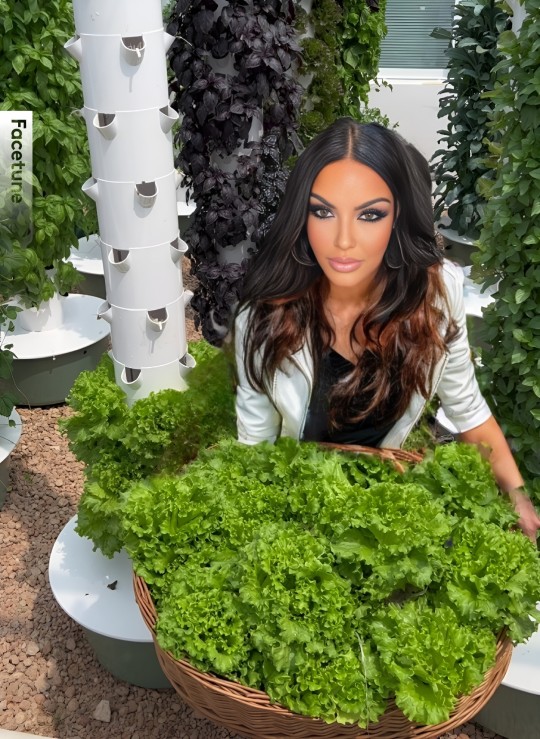
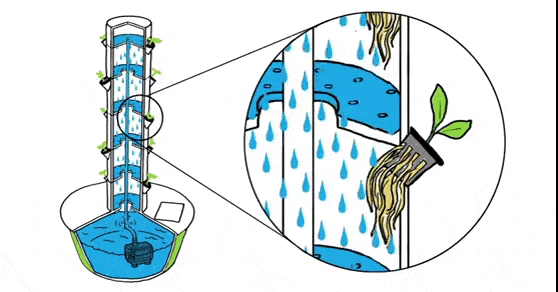
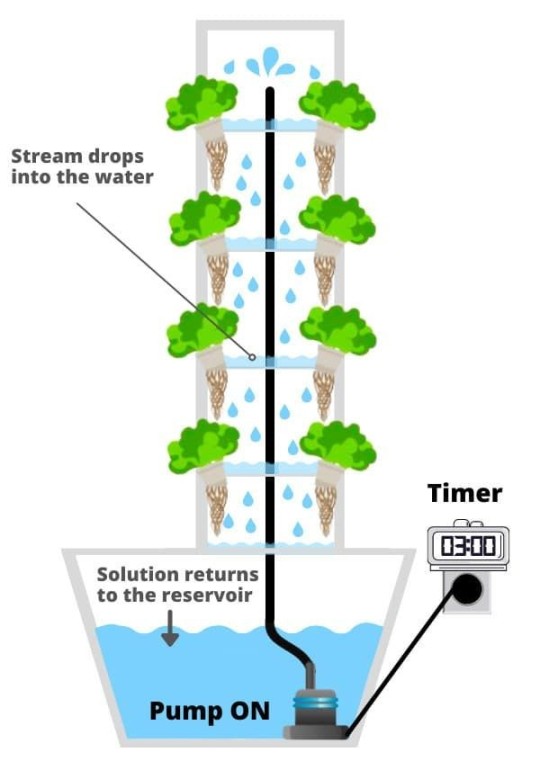

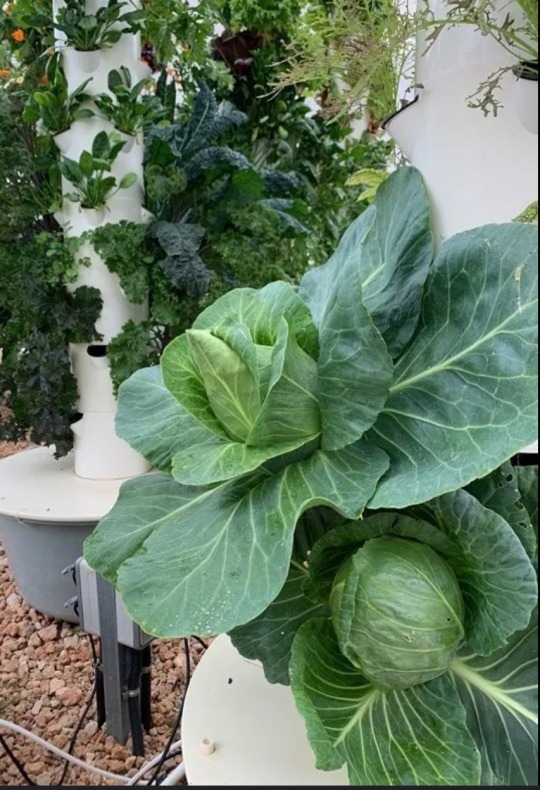
#creative inspiration#education#vertical farming#aquaculture#aquaponics#all natural#science#entrepreneur#organic agriculture#organic farming#self love#herbal remedies#inspiration#love#shrimp#garden#sustainability#farm#farming#sale#growyourbusiness#grow food#knowledge#nature#earth
2 notes
·
View notes
Text
"someone doesn't want new followers? i'm gonna make a super judgy vaguepost, and make it sound like it was a new rule that only Super Weird People use -- resulting in everyone and their mother mocking the Super Weird Weirdo -- rather than personal preference of one (1) singular person, and let it get to 40k notes! this is not to mock the op of course ^_^"
2 notes
·
View notes
Text
On April, 20th, 2010 - The Deep Water Horizon Oil plateform in the Gulf Of Mexico began what is considered to this day as the worst american enviromental disaster to ever occur. (Or at least that is the story)
There was a 200 mile no fly zone established for over 3 months during the entire "clean up" process with little to no allocated coverage.
Thousands of animals of all kinds land,air & sea were all affected from this.
Unfortunately,
the statistics drawn from USDA, commercial fishing & wildlife conservation all conclude with the same answer.
Despite all the death that was caused to natural life from this lone accident,
research shows -
ONE single day of active commercial net fishing in the Gulf Of Mexico will kill more animals due to bycatch ( non sought after species/ non commercial ) and weighted net fishing practices than what was lost in the entire 3 month span of the B.P oil spill.
JUST ONE SINGLE DAY of what is considered typical modern day commercial fishing.
Something to think about? Or is it something that needs to be addressed?
Be your own judge.
Estimated life remaining in international waters 10 - 15 years scientists and marine biologists say.
Full scale net fishing practices were established in the mid 1950s and have been operating world wide for every country since that time..
& if none of that has you pissed off any,
top it off with this fun fact.
Florida is a peninsula surrounded by salt water with it's own dedicated commercial fishing fleets.
.. One would have to assume the shrimp you are eating at publix market or at any local restaurant would be relatively fresh considering it is being served to the general public and we live so close to the ocean in general.
Over 87% of seafood consumed in the US is imported from places like Thailand, Chyna & Taiwan.
Typically speaking,
your average shrimp anywhere mainland USA has been frozen on ice usually 4 - 6 months prior to it being sold on a grocery store isle or restaurant.
Food for thought!
Anyone going to do something about it?
.. We will see!
🍤 🤷
#shrimp#shrimp farm#aquaculture#ocean conservation#oceanlife#wildlife#fish farming#fish farm#company#florida#local#swflorida#swfl#sea#seafood
5 notes
·
View notes
Text
recovering from growing up adventist is like 50% unlearning the belief that the world is ending 15% trying to accept feeling normal human attraction to other people 15% acting normal on saturdays and 20% convincing yourself that you won't forfeit your eternal soul and make god hate you by eating pork or shrimp
#i don't really like pork + don't care for the state of animal welfare on pig farms generally so i only eat it if its being given to me#but i cant pretend like i dont still have a dumb hangup about it. like oh my god we are not going to get brain worms and die please shut up#and i really hate the texture of shrimp but i'm working on my other seafood tolerance#would actually love to see a paper on the incidence of disordered eating among diet restricted adventists. for normal reasons#it's not even that they just eat 'kosher' (they don't they don't ever know what that actually means) but the whole 'health message' bs#is so like. i could have turned out way worse#and i'm not doing great! tbh#thinking about the time my mother threw a whole fit in a public restaurant because i got something that happened to have bacon bits#god anyway i am totally normal about being invited over for dinner involving pork#me#ex sda
40 notes
·
View notes
Text
pico cosmos on yt my beloved keep talking abt sea monkeys i love shrimp
#sassy speaks#my parents never let me get sea monkeys as a kid bc they’re ‘just brine shrimp’#which is so funny bc like did they really think I thought they looked like the cartoon characters on the box#i literally just like weird shrimp now I want sea monkeys#also unrelated i had an ant farm when I was like 12 that was rly cool to watch I kinda want to get another one
5 notes
·
View notes
Text

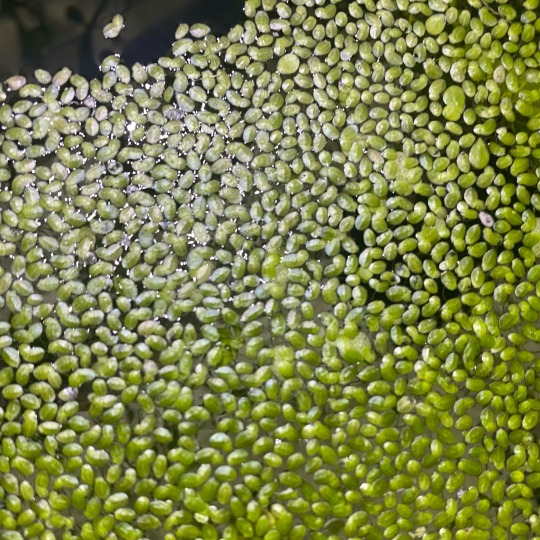
i. might have put a little bit of duckweed in the 5gal
#txt#my aquatics#5gal#can hardly believe i willingly put this monster of a plant in one of my tanks but i want lots of floaters for the shrimp i plan on getting..#also for poor ghost as he's still in recovery/quarantine#idk if the rule of albino = delicate eyesight applies to fish but i figure some shade couldn't hurt him#i sort of want to spread it to my other tanks tbh. farm a little to sell/give away
4 notes
·
View notes
Text
Preventive Measures for Loose Shell Syndrome in Vannamei
As a shrimp farmer, ensuring the health and well-being of your vannamei shrimp stock is of utmost priority. One concerning issue that can arise is loose shell syndrome, which can significantly impact your shrimp harvest and profitability. Loose shell syndrome is a condition where the shrimp's exoskeleton becomes soft and separates from the body, making them vulnerable to diseases and physical damage. However, by implementing effective preventive measures, you can minimize the risk of this syndrome and safeguard your shrimp harvest.

1. Maintain Optimal Water Quality:
Proper water quality management is crucial in preventing loose shell syndrome. Ensure that you regularly monitor and maintain the ideal levels of key parameters such as pH, dissolved oxygen, temperature, and ammonia. Fluctuations in these parameters can stress the shrimp and make them more susceptible to loose shell syndrome. Invest in high-quality water testing kits and follow best practices for water exchange and aeration.
2. Provide a Balanced Diet:
A well-balanced and nutritious diet is crucial for shrimp to develop strong, healthy exoskeletons. Ensure feed contains adequate calcium, phosphorus, and other essential minerals for proper exoskeleton formation. Consider supplements or natural mineral sources in your feeding regimen. Skretting's Gamma and ARMIS products are excellent options to support shrimp health and growth. Gamma is designed to enhance disease resistance and promote efficient growth, while ARMIS focuses on improving gut health and overall performance. These specialized feeds can help optimize your shrimp's diet at various growth stages.
3. Implement Biosecurity Measures:
Loose shell syndrome can also be caused by various pathogens, such as bacteria, viruses, and fungi. Implementing strict biosecurity measures can help prevent the introduction and spread of these harmful microorganisms. This includes isolating new shrimp stocks, disinfecting equipment and materials, and limiting access to your shrimp ponds or tanks. Additionally, regularly monitoring your shrimp for any signs of disease and promptly treating any affected individuals can help contain potential outbreaks.
4. Manage Stress Levels:
Shrimp are highly stress-sensitive, which can weaken immunity and increase susceptibility to loose shell syndrome. Minimize stress by avoiding overcrowding, maintaining optimal water conditions, and reducing disturbances during molting. Implement stress-reducing techniques like providing hiding places and adjusting lighting. Skretting's Santron is an excellent addition to your shrimp management strategy. This specialized feed supplement is designed to enhance stress resistance and support overall health. By incorporating Santron into your feeding regimen, you can help bolster your shrimp's ability to cope with environmental stressors and maintain robust exoskeletons.
5. Monitor and Treat Molting Issues:
Loose shell syndrome is often associated with molting problems. Ensure that you closely monitor your shrimp during molting periods and take appropriate actions if any issues arise. If you notice shrimp struggling to shed their old exoskeletons or experiencing difficulties with the molting process, consult with aquaculture experts to determine the best course of treatment or preventive measures.
6. Enhance Environmental Enrichment:
Providing an enriched environment for your shrimp can help reduce stress and promote overall well-being. Consider adding natural substrates, such as sand or gravel, to your shrimp ponds or tanks. These substrates can provide hiding places and simulate a more natural environment, which can positively influence shrimp behavior and health.
By implementing these preventive measures, you can significantly reduce the risk of loose shell syndrome in your vannamei shrimp stock. Remember, early detection and prompt action are crucial in addressing any potential issues. Regularly monitor your shrimp their environment and their shrimp feed, and don't hesitate to seek professional advice or assistance when needed.
Protecting your shrimp harvest is not only essential for your business's success but also contributes to the sustainability of the aquaculture industry as a whole. By prioritizing preventive measures and promoting shrimp health, you can ensure a bountiful and profitable harvest while minimizing the impact on the environment.
0 notes
Text
Understanding the Factors Affecting Dissolved Oxygen Levels in Aquaculture Ponds
Dissolved oxygen (DO) is a crucial parameter in aquaculture ponds, directly influencing the health, growth, and survival of aquatic species such as fish, shrimp, and other marine life. Proper management of DO levels is essential to ensure a healthy environment, promoting efficient production and minimizing losses. Various factors impact DO levels, and understanding these is key to maintaining a balanced and productive pond ecosystem. This blog will explore the factors affecting DO levels in aquaculture ponds, with a focus on how the type of marine life stocked influences oxygen dynamics.
1. Temperature
Temperature is a fundamental factor that affects dissolved oxygen levels in water. As water temperature increases, the solubility of oxygen decreases. Warmer water holds less oxygen, which can be problematic during hot weather when DO levels may drop to critical levels. Additionally, higher temperatures increase the metabolic rates of fish and shrimp, leading to higher oxygen consumption.
In ponds with higher temperatures, it becomes essential to monitor DO levels closely, especially during the summer months. Aeration systems can help mitigate the effects of temperature on DO by enhancing oxygen diffusion and water circulation.

2. Salinity
Salinity, or the concentration of dissolved salts in water, influences the solubility of oxygen. Higher salinity reduces the amount of oxygen that can be dissolved in water, which is particularly relevant in brackish water ponds used for shrimp farming or marine aquaculture. As salinity increases, DO levels decrease, making it crucial to monitor and manage salinity levels effectively.
In areas where freshwater availability is limited, maintaining the balance between salinity and DO is vital. Proper aeration and water exchange practices can help maintain adequate oxygen levels in high-salinity environments.

3. Photosynthesis and Respiration
Aquatic plants, algae, and phytoplankton contribute to oxygen dynamics in ponds through photosynthesis and respiration. During the day, these organisms produce oxygen, which can increase DO levels. However, at night, they consume oxygen through respiration, potentially leading to decreased DO levels.
Ponds with dense algal blooms may experience significant diurnal fluctuations in DO levels. These fluctuations can stress aquatic life, particularly during early morning hours when oxygen levels are lowest. Managing algal growth and ensuring adequate aeration are important to stabilize DO levels.

4. Organic Matter and Decomposition
The accumulation of organic matter, such as uneaten feed, fish waste, and dead plant material, contributes to oxygen consumption through decomposition. Microbial activity breaks down this organic matter, consuming large amounts of oxygen in the process. High levels of organic matter can lead to oxygen depletion, especially in the bottom layers of the pond.
Effective pond management practices, such as regular sludge removal and the use of high-quality feed, can help reduce organic matter buildup and maintain higher DO levels. Aeration also supports aerobic decomposition, which is more efficient and less harmful to aquatic life.
5. Stocking Density
Stocking density, or the number of fish, shrimp, or other organisms in a pond, directly affects oxygen demand. Higher stocking densities increase the overall oxygen demand, which can lead to lower DO levels if not managed properly. In intensive aquaculture systems, careful monitoring and management of DO levels are essential to prevent oxygen-related stress.
Balancing stocking density with available oxygen resources is crucial for maintaining healthy and productive ponds. Regular monitoring and adjustments to aeration and feeding practices can help ensure that oxygen supply meets the demand.
6. Water Movement and Circulation
Water movement and circulation are critical for maintaining uniform DO levels throughout the pond. In stagnant ponds, oxygen tends to stratify, with higher concentrations near the surface and lower concentrations at greater depths. This stratification can create oxygen-depleted zones, particularly at the bottom of the pond.
Aeration and circulation systems help mix the water, distributing oxygen more evenly. Proper water movement also prevents the formation of "dead zones" where oxygen levels are too low to support aquatic life. Regular operation of aeration systems during critical periods is essential for maintaining optimal DO levels.
7. Feeding Practices
Feeding practices significantly impact DO levels in aquaculture ponds. Overfeeding can lead to the accumulation of uneaten feed, which increases organic matter and oxygen consumption through decomposition. Additionally, the metabolic activity of fish and shrimp increases during feeding, temporarily raising their oxygen demand.
Using high-quality feed, feeding in appropriate quantities, and scheduling feedings during cooler parts of the day can help minimize the impact on DO levels. These practices contribute to more stable oxygen levels and healthier aquatic life.
8. Weather Conditions
Weather conditions, including wind, rain, and atmospheric pressure, influence DO levels in aquaculture ponds. Wind promotes surface agitation and mixing, enhancing oxygenation. Rain can either increase or decrease DO levels, depending on its intensity and temperature. Atmospheric pressure also affects oxygen solubility, with lower pressure reducing DO levels.
Weather-related fluctuations in DO levels can be managed through the use of aeration systems and careful monitoring of weather patterns. Anticipating changes in weather and adjusting pond management practices accordingly can help maintain stable DO levels.
9. Pond Depth and Area
The physical characteristics of the pond, such as its depth and surface area, affect oxygen diffusion and distribution. Shallow ponds generally have better oxygenation at the bottom due to easier mixing by wind and aeration. However, they are more susceptible to temperature fluctuations. Deep ponds may experience stratification, with oxygen-depleted zones forming at greater depths.
Proper pond design and management, along with strategic placement of aerators, can help maintain adequate DO levels throughout the pond. Regular monitoring of DO at different depths ensures that all areas of the pond remain well-oxygenated.
10. Water Quality Parameters
Water quality parameters, including pH, ammonia, nitrite, and nitrate levels, influence dissolved oxygen availability. High levels of ammonia and nitrites are toxic to aquatic life and increase oxygen demand. The conversion of ammonia to nitrate through nitrification consumes oxygen, further reducing DO levels.
Maintaining optimal water quality through regular monitoring and management is crucial for preventing oxygen depletion. Aeration supports nitrification processes, helping to control toxic compounds while maintaining sufficient DO levels.
11.Type of Marine Life Stocked
The specific type of marine life stocked in the pond—whether fish, shrimp, seaweed, or other species—significantly affects DO levels. Different species have varying oxygen requirements and contribute differently to the pond's oxygen dynamics.
Fish: Fish, especially species like tilapia or catfish, typically have moderate to high oxygen demands. They are active swimmers and require well-oxygenated water to thrive. Higher stocking densities of fish can lead to greater oxygen consumption, necessitating efficient aeration systems.
Shrimp: Shrimp, particularly in high-density farming, also have significant oxygen requirements. They are more sensitive to low DO levels and are prone to stress and mortality if oxygen levels drop too low. Shrimp farming often requires precise aeration management to maintain optimal DO levels.
Seaweed: Seaweed and other aquatic plants contribute to oxygen production during the day through photosynthesis. However, they also consume oxygen at night through respiration. While seaweed can help increase DO levels during daylight, it can contribute to oxygen depletion at night, especially in densely planted ponds.
Understanding the oxygen requirements of the specific species stocked in your pond is crucial for effective DO management. Tailoring aeration and management practices to the needs of your stock helps create an environment conducive to growth and productivity.
Conclusion: Optimizing Dissolved Oxygen Levels for Aquaculture Success
Maintaining optimal dissolved oxygen levels in aquaculture ponds is essential for the health, growth, and productivity of aquatic species. By understanding and managing the factors that influence DO levels—such as temperature, salinity, organic matter, stocking density, and the type of marine life stocked—you can create a balanced and oxygen-rich environment that supports the well-being of your stock.
Neglecting DO management can lead to serious consequences, including stressed and weakened aquatic animals, reduced growth rates, increased disease susceptibility, and even mass mortalities. Therefore, adopting a proactive approach to monitoring and maintaining DO levels is critical. This includes regular use of aeration systems, careful feeding practices, and vigilant observation of water quality parameters.
To assist you in maintaining the right oxygen levels, Airoxi offers a Dissolved Oxygen Calculator on their website. This tool helps you determine the proper aeration requirements based on your specific pond conditions, ensuring that you provide the ideal environment for your fish, shrimp, or other marine life. I highly encourage you to visit www.airoxi.com/calculator https://www.airoxi.com/calculator to use this valuable resource and optimize your aquaculture operation for success.
By leveraging accurate aeration calculations and sound pond management practices, you can ensure that your aquaculture venture thrives, providing healthy and productive yields year-round.
Contact AirOxi for your aquaculture aeration requirements
+917041004098
www.buy.airoxi.com
#airoxitube #airoxi #airoxidiffuser #airoxiproducts #aquarium #aquaculture #fishing #fishingfarm #shrimp #shrimptank #fishtank #tank #RAS #aeration #aerationsystem #bubbles #bubble #post #postoftheday #oxygenation #hatcheries #shrimpfarm #aqualife #blower #microbubblegenerator #transportationaeration #turbineblower #submersibleaerator #biofloc #growoutponds #nurseries #oxygenconcentrator #diffuser # #NFDB and #national fisheries development board
#fish farming#shrimp farming#aquaculture#aeration solution#airoxi#fish#aeration#aeration tubes#airoxitube#airoxi tube
0 notes
Text
Leading Processors and Exporters of Shrimps in India: Ice Dream Global.

In the realm of seafood, especially shrimp, the name Ice Dream Global resonates with excellence and innovation. Renowned as processors and exporters of shrimps in India, Ice Dream Global has carved a niche for itself with its unwavering commitment to quality, innovation, and sustainability.
Located strategically near shrimp aquaculture hubs, Ice Dream Global's processing plant boasts a prime location that ensures optimal cold chain effectiveness. Situated within a six-kilometer radius of the farming sites, this proximity enables swift transportation of freshly harvested shrimps to the processing facility, minimizing transit time and preserving the freshness of the produce.
One of the cornerstones of Ice Dream Global's success lies in its adherence to stringent quality standards. With EU approval and full Hazard Analysis and Critical Control Points (HACCP) compliance, the company leaves no stone unturned in ensuring that every step of the processing journey meets international benchmarks. This meticulous attention to detail not only upholds the reputation of Ice Dream Global but also instills confidence in its customers regarding the quality and safety of the products.
The processing plant itself is a testament to Ice Dream Global's commitment to excellence. Boasting a meticulously planned layout, the facility is designed to streamline operations and minimize the risk of cross-contamination. Each area of the plant is designated with precision, ensuring that different stages of processing are carried out seamlessly and hygienically.
Ice Dream Global's commitment to innovation is evident in its state-of-the-art refrigeration system. Utilizing Gas-Liquid Chromatography (GLC) technology, the refrigeration system ensures rapid freezing of shrimps upon arrival at the processing plant. This swift freezing process not only preserves the freshness and texture of the shrimps but also extends their shelf life, allowing for seamless export to global markets.
Furthermore, the refrigeration system maintains stable storage temperatures, safeguarding the integrity of the products throughout their stay at the facility. This adherence to optimal storage conditions reflects Ice Dream Global's dedication to quality assurance and customer satisfaction.
In addition to its technological advancements, Ice Dream Global prioritizes sustainability in its operations. The company actively seeks eco-friendly practices and implements measures to minimize its environmental footprint. From responsible sourcing of raw materials to efficient energy management, Ice Dream Global is committed to preserving the delicate ecosystems that support shrimp aquaculture.
In conclusion, Ice Dream Global stands as a beacon of excellence in the realm of shrimp processing and export from India. With its strategic location, adherence to stringent quality standards, technological innovations, and commitment to sustainability, Ice Dream Global continues to set industry benchmarks and delight customers worldwide with premium-quality shrimps.
#Processors and Exporters of Shrimps in India#Processing#Packaging & Exporting of Shrimps#top 10 shrimp exporters in india#Top Seafood Exporters In India#Shrimp Exporters from India#The Best Quality Prawns Exporting Company India#Exporter of Prawns and Shrimps in India#Shrimp Exporter in India#Shrimp Farming in India#Leading Shrimp and Prawn Exporters#Indian Shrimp Export#Seafood Exporters#Shrimp Exporters#Prawn Exporters#Frozen Shrimp Supplier
0 notes